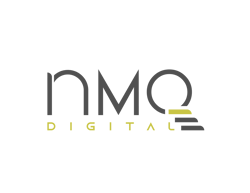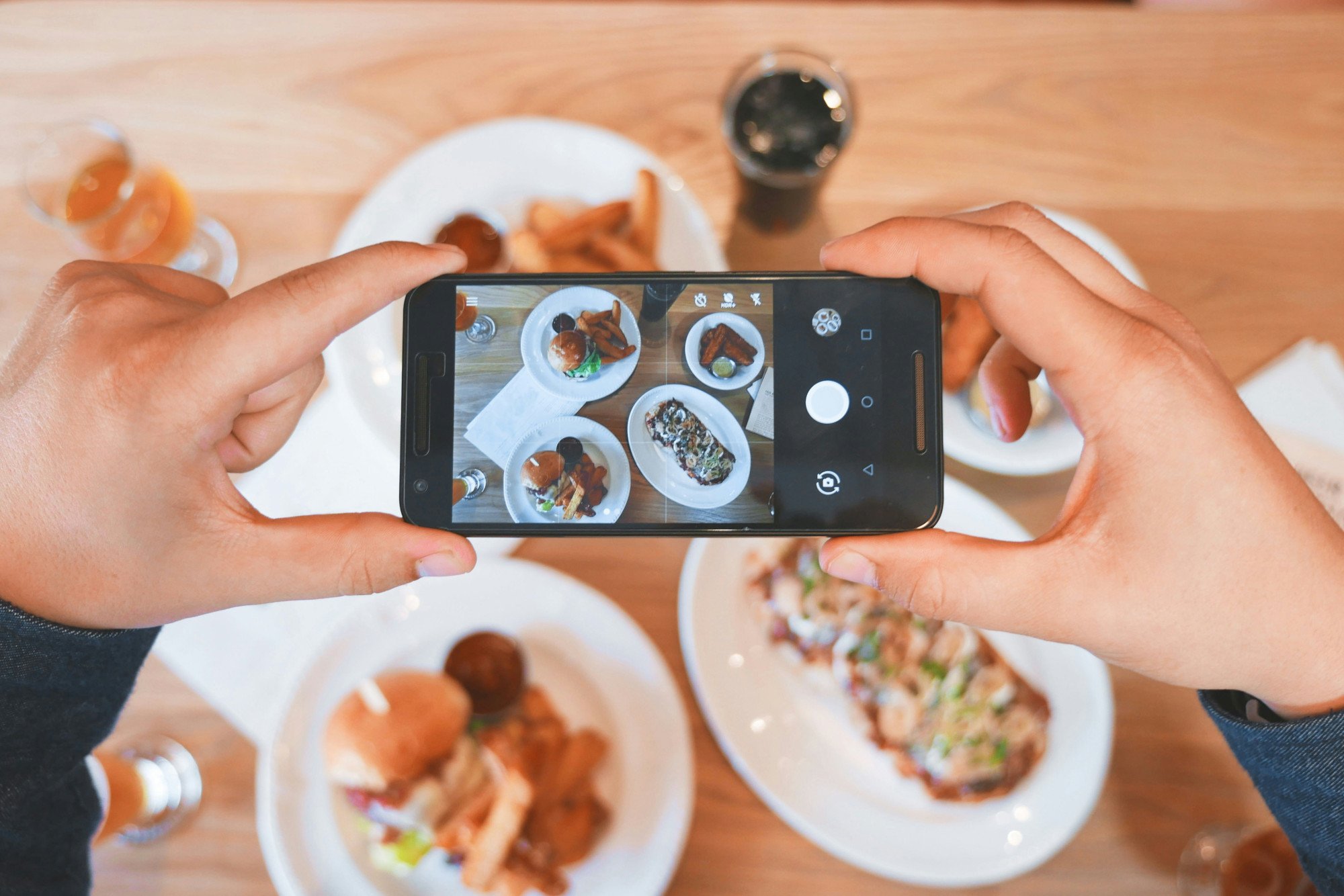Digital advertising has plenty of options when it comes to payment models for online campaigns and understanding the intricacies of paid ads payment models is important for marketers navigating the competitive landscape.
From the widely used Cost Per Click (CPC) to Cost Per Mille (CPM), Cost Per Acquisition (CPA), and beyond, the payment structures in paid advertising play a pivotal role in shaping campaign strategies.
In this blog we will focus on:
- What are the most common payment models in paid advertising?
- How to understand the costs and choose a payment model?
- How to optimize your paid campaigns?
1: What are the most common payment models in paid advertising?
In paid advertising, various payment models dictate how advertisers are charged for their campaigns.
Each model comes with its unique set of advantages and considerations, influencing the effectiveness of campaigns and the return on investment. Here are some of the most common payment models:
1: CPC (Cost Per Click)
- Definition: It is a payment model where advertisers pay a fee each time a user clicks on their ad.
- Ideal for: Driving targeted traffic to websites or landing pages, generating leads, and promoting specific product offerings.
- Pros: Focuses on user engagement and measures results based on clicks.
- Cons: Can be expensive if clicks don't lead to conversions.
For example, let us assume an online retailer wants to drive traffic to its e-commerce website and increase sales for a new line of products. The retailer decides to invest in a digital advertising campaign to promote these products to a wider audience.
The primary goal of the campaign is to generate clicks that lead potential customers to the product pages on the website, ultimately resulting in increased sales.
Implementation:
-
Ad Creation: The retailer creates visually appealing and engaging display ads showcasing the new products. These ads include compelling images, persuasive copy, and a clear call-to-action prompting users to click for more details.
-
Platform Selection: The retailer chooses a variety of platforms for the campaign, including search engines, social media, and relevant display ad networks. Each platform utilizes the CPC model, allowing the retailer to pay only when users click on their ads.
-
Keyword Targeting: For search engine advertising, the retailer carefully selects relevant keywords related to the new products. This ensures that the ads appear when users actively search for terms associated with the product line.
-
Audience Targeting: On social media platforms, the retailer utilizes audience targeting options to reach users who are likely interested in the new products based on demographics, interests, and online behavior.
-
Optimization: Throughout the campaign, the retailer monitors performance metrics such as click-through rate (CTR) and conversion rates. By analyzing these metrics, adjustments can be made to optimize the campaign for better results.
In the end, the retailer successfully attracts a significant number of clicks to its product pages, resulting in increased visibility and engagement.
With the CPC model, the retailer pays only for the actual clicks received, making it a cost-effective way to drive targeted traffic and potentially boost sales for the new product line.
2: CPM (Cost Per Mille)
- Definition: Cost Per Mille, or Cost Per Thousand Impressions, involves advertisers paying a fee for every thousand impressions (views) of their ad.
- Ideal for: Increasing brand awareness, enhancing brand recall, and driving brand consideration as advertisers pay for the exposure of their ad to a large audience.
- Pros: Reaches a wider audience without the pressure of clicks.
- Cons: Can be less effective for direct response campaigns.
For example, let us assume a fashion brand has recently launched a new collection and wants to create widespread awareness to reach its target audience. The brand aims to showcase its products to a large number of people, even if immediate clicks or actions are not the primary focus at this stage.
The primary goal of the campaign is to maximize brand exposure and create awareness of the new collection. The brand is less concerned about immediate user interactions (clicks) and more focused on reaching as many people as possible.
Implementation:
-
Ad Design: The brand creates visually striking and brand-focused display ads that showcase the key pieces from the new collection. These ads are designed to capture attention and create a memorable visual impression.
-
Platform Selection: The brand opts for display advertising on various online platforms, including social media, fashion-related websites, and other display ad networks. The chosen platforms charge based on the CPM model, allowing the brand to pay for every thousand impressions of its ads.
-
Target Audience: The brand defines its target audience based on demographics, interests, and online behavior. However, the primary focus is on broad exposure, reaching a large and diverse audience to increase overall brand visibility.
-
Ad Placement: The brand strategically places its display ads on high-traffic websites, popular social media channels, and within relevant content networks. This ensures that the ads are seen by a significant number of users.
-
Monitoring Brand Metrics: Throughout the campaign, the brand monitors key brand metrics, such as ad reach, brand recall, and overall brand sentiment. While clicks are not the primary metric, the brand aims to gauge the impact of the campaign on overall brand awareness.
As a result, the CPM-based campaign successfully achieves widespread exposure, with the brand's ads appearing to a large audience across various platforms.
The focus on impressions helps the brand enhance its overall visibility, laying the foundation for future engagement and interactions as the target audience becomes more familiar with the new collection.
3: CPA (Cost Per Acquisition)
- Definition: Cost Per Acquisition, also known as Cost Per Action, is a performance-based model where advertisers pay a fee only when a specific action is completed, such as a purchase, sign-up, or form submission. CPA is commonly used in affiliate marketing and e-commerce, aligning payment with desired user actions.
- Ideal for: Achieving measurable conversions, such as sales, lead generation, or specific app downloads.
- Pros: Focuses on achieving specific business outcomes.
- Cons: May require a larger upfront investment.
For example, an online education platform offers a range of courses and wants to boost enrollment for its premium courses. The platform identifies a target audience interested in professional development and is willing to invest in advanced education.
The primary goal of the campaign is to acquire new paying students for the premium courses. Instead of paying for clicks or impressions, the platform wants to optimize its advertising spend by paying only when users take the desired action—enrolling in a paid course.
Implementation:
-
Ad Creation: The online education platform designs compelling and informative ads showcasing the benefits of its premium courses. Each ad includes a clear call-to-action prompting users to "Enroll Now" or a similar directive.
-
Platform Selection: The platform selects advertising platforms that allow for CPA campaigns. This may include search engine advertising, social media, or other channels where the platform can specify its objective as driving course enrollments.
-
Target Audience: The platform identifies a specific target audience, such as professionals seeking career advancement, and utilizes demographic and interest-based targeting to reach individuals likely to enroll in premium courses.
-
Landing Page Optimization: The platform ensures that the landing pages for its premium courses are optimized for conversions. This includes clear information about the courses, benefits, and a seamless enrollment process.
-
Conversion Tracking: Implementing robust conversion tracking mechanisms, the platform monitors and analyzes user actions, specifically tracking the number of users who complete the desired action—enrolling in a paid course.
-
Bid Optimization: The platform adjusts its bids based on the CPA goal, ensuring that it pays an acceptable cost for each successful course enrollment. This may involve bidding strategies that prioritize conversions over clicks or impressions.
As a result, by focusing on CPA, the online education platform successfully attracts individuals who are more likely to convert into paying students.
The campaign optimizes advertising spend, as the platform only pays for tangible results—new enrollments in premium courses. This approach aligns marketing efforts with the platform's business goal of acquiring paying customers for its educational offerings.
4: CPV (Cost Per View)
- Definition: CPV stands for Cost Per View, and it is a digital advertising payment model where advertisers pay a fee each time their video ad is viewed or engaged. CPV is commonly associated with video advertising, particularly on platforms like YouTube and other video-centric websites.
- Ideal for: Engaging video content, showcasing product features, and measuring audience engagement with video ads.
- Pros: Aligns costs with actual video views.
- Cons: May not be suitable for all types of video ads.
For example, a cosmetics brand wants to launch a new product line and engage its target audience through an online video marketing campaign. The brand has created a series of captivating and informative videos showcasing makeup tutorials, product demonstrations, and behind-the-scenes content.
The primary goal of the campaign is to increase brand visibility, educate viewers about the new product line, and drive engagement. The brand aims to pay for views and interactions with its video content rather than clicks or impressions.
Implementation:
-
Video Content Creation: The cosmetics brand creates visually appealing and informative video content, designed to capture the attention of its target audience. Videos include makeup tutorials featuring new products, tips, and user testimonials.
-
Platform Selection: The brand chooses online platforms with a strong video presence, such as YouTube. These platforms often offer CPV pricing models, allowing the brand to pay for each view of its video content.
-
Audience Targeting: The brand defines its target audience based on demographics, interests, and online behavior. It utilizes targeting options on the chosen platform to ensure that the videos are shown to users likely to be interested in cosmetics and beauty products.
-
Ad Placement: The videos are strategically placed in relevant sections, such as beauty and lifestyle channels, to reach users who are actively seeking or interested in beauty-related content.
-
Engagement Metrics: The brand focuses on engagement metrics such as views, likes, comments, and shares. CPV allows the brand to pay only when users actively engage with the video content, aligning with the campaign's goal of creating a meaningful connection with the audience.
As a result, the CPV-based video marketing campaign helps the cosmetics brand achieve widespread visibility and engagement.
By paying for actual views and interactions, the brand ensures that its budget is allocated to users who have shown genuine interest in the content. The campaign not only showcases the new product line but also builds a community of engaged viewers interested in the brand's beauty offerings.
5: CPE (Cost Per Engagement)
- Definition: Cost Per Engagement is a model where advertisers pay for user interactions with their ad, which may include actions like clicks, video views, or social media engagement. This model is often used for interactive and rich media ads.
- Ideal for: Driving social media engagement, encouraging interactions, and building community around the brand.
- Pros: Measures interactions beyond clicks, promoting active participation.
- Cons: May not be suitable for all types of social media campaigns.
For example, let us say a travel agency wants to promote its latest vacation packages and build a community of travel enthusiasts on social media. The agency aims to go beyond traditional metrics like clicks and views and prioritize user engagement to create a more interactive and connected audience.
The primary goal of the campaign is to encourage social media users to actively engage with the travel agency's content. This includes clicking on the ad to explore package details, liking the posts, sharing travel tips, and commenting on their dream destinations.
Implementation:
-
Ad Content Creation: The travel agency develops visually appealing ad creatives showcasing stunning destinations, exciting activities, and attractive vacation packages. The ads are designed to evoke a sense of wanderlust and adventure.
-
Platform Selection: The agency chooses social media platforms known for strong engagement features, such as Facebook or Instagram. These platforms offer CPE campaigns, allowing the agency to pay for specific user interactions rather than impressions or clicks.
-
Audience Targeting: The agency defines its target audience based on travel interests, demographics, and online behavior. Using precise targeting options, the campaign aims to reach users likely to engage with travel-related content.
-
Ad Placement: Ads are strategically placed in users' social media feeds, and the campaign utilizes engaging ad formats, such as carousel ads or video content, to encourage diverse forms of interaction.
-
Engagement Metrics: The agency focuses on CPE metrics, monitoring the cost for each engagement, whether it's a click, like, share, or comment. This approach ensures that the agency pays for meaningful interactions, fostering a sense of community and connection among travel enthusiasts.
As a result, the CPE-based social media engagement campaign proves successful in building an interactive community around the travel agency's brand.
Users actively engage with the content, sharing their travel aspirations, commenting on their favorite destinations, and expressing interest in vacation packages. This not only increases brand awareness but also establishes a loyal and engaged audience for future travel promotions and offerings.
6: CPI (Cost Per Install)
- Definition: CPI stands for Cost Per Install, and it is a digital advertising payment model where advertisers pay a fee each time a user installs their mobile application. This model is commonly used in mobile app marketing campaigns to drive app installations and user acquisition.
- Ideal for: Promoting mobile apps, driving app installs, and increasing app usage.
- Pros: Aligns costs with actual app installs
- Cons: May not be suitable for all types of mobile apps.
For example, let us assume a gaming company has developed a new mobile game and wants to increase its user base by encouraging people to download and install the game on their smartphones.
The primary goal of the campaign is to drive app installations, allowing the gaming company to expand its user base and increase engagement with the newly launched game.
Implementation:
-
Ad Creatives: The gaming company creates visually appealing and enticing ad creatives that showcase gameplay, graphics, and key features of the mobile game. The ads are designed to capture the attention of potential players.
-
Platform Selection: The company utilizes mobile advertising platforms and app marketplaces that support CPI campaigns. Common platforms include social media networks, in-app ad networks, and app stores.
-
Target Audience: The gaming company defines its target audience based on demographics, interests, and gaming preferences. The campaign is specifically aimed at users who are likely to be interested in mobile gaming.
-
Ad Placement: Ads are strategically placed within other mobile apps, social media feeds, and relevant app categories to reach users who are actively using mobile devices and may be interested in downloading a new game.
-
App Store Optimization (ASO): The gaming company optimizes its app store listings with relevant keywords, compelling descriptions, and engaging visuals to maximize visibility and encourage users to install the game.
-
Tracking Installations: The company employs tracking mechanisms to monitor and measure app installations. Each time a user installs the game through the ad, the CPI model ensures that the advertiser pays a set fee for each successful installation.
As a result, the CPI-based mobile app install campaign proves effective in driving a significant number of installations for the gaming company's new mobile game.
By paying only for actual installations, the company can directly attribute costs to user acquisition, helping them increase the campaign's success in expanding the game's user base. This approach is particularly valuable in the competitive mobile app market where acquiring new users is a critical success factor.
7: CPL (Cost Per Lead)
- Definition: CPL stands for Cost Per Lead, and it is a digital advertising payment model where advertisers pay a fee for each qualified lead generated through their marketing campaign. This model is commonly used in lead generation campaigns, where the primary objective is to acquire potential customers and build a database of interested prospects.
- Ideal for: Acquiring potential customers, building a customer database, and nurturing leads.
- Pros: Focuses on generating high-quality leads.
- Cons: May not be suitable for all types of businesses or industries.
For example, let us say a B2B software company has developed a new productivity tool for businesses and wants to generate leads for its sales team to nurture and convert into customers.
The primary goal of the campaign is to acquire qualified leads—business professionals who express interest in the software tool and are potential customers for the company.
Implementation:
-
Target Audience Definition: The software company defines its target audience based on criteria such as company size, industry, job role, and relevant interests. The campaign aims to reach decision-makers and influencers within businesses.
-
Content Creation: The company creates valuable and informative content such as whitepapers, e-books, or webinars that showcase the benefits of their productivity tool. This content serves as a lead magnet, attracting professionals interested in improving their business processes.
-
Landing Page Development: Specific landing pages are created to host the content and capture lead information. The landing pages include a lead capture form where users can provide their contact details in exchange for access to valuable content.
-
Campaign Channels: The company employs various digital channels to promote its content and drive traffic to the dedicated landing pages. This may include email marketing, social media advertising, search engine marketing, and content syndication on relevant industry websites.
-
Lead Qualification: To ensure that leads are qualified, the company may include specific questions in the lead capture form, asking about the prospect's role, company size, and current challenges. This helps filter out unqualified leads.
-
Cost Per Lead Calculation: The CPL is calculated by dividing the total campaign spend by the number of leads generated. For example, if the company spends $1,000 on the campaign and generates 200 leads, the CPL would be $5 per lead.
As a result, the CPL-based B2B lead generation campaign successfully attracts a targeted audience interested in the software company's productivity tool.
The marketing team now has a pool of qualified leads with whom they can engage, nurture, and potentially convert into customers, aligning with the company's overall sales objectives. This approach allows the company to allocate its budget efficiently, paying only for leads with a genuine interest in their product.
So, here is a quick summary table for you to recap;
| Metric | CPC | CPM | CPA | CPV | CPE | CPI | CPL |
| Definition | Cost per click | Cost per mille | Cost per acquisition | Cost per view | Cost per engagement | Cost per install | Cost per lead |
| Ideal For | Driving targeted traffic to websites | Increasing brand awareness | Achieving measurable conversions | Engaging video content | Driving social media engagement | Promoting mobile apps | Acquiring potential customers |
| Pros | Focuses on user engagement | Reaches a wider audience without the pressure of clicks | Focuses on achieving specific business outcomes | Aligns costs with actual video views | Measures interactions beyond clicks. | Aligns costs with actual app installs | Focuses on generating high-quality leads |
| Cons | Can be expensive if clicks don't lead to conversions | Can be less effective for direct-response campaigns | May require a larger upfront investment | May not be suitable for all types of video ads | May not be suitable for all types of social media campaigns | May not be suitable for all types of mobile apps | May not be suitable for all types of businesses or industries |
2: How to understand the costs and choose a payment model?
The costs associated with paid advertising campaigns depend on the bidding format you choose. While some bidding formats are directly connected to the purchase model, they may not be available through all media partners.
For instance, you may be able to pay per click (CPC) or cost per mille (CPM) and optimize for cost per acquisition (CPA), selecting the desired maximum cost per acquisition.
However, you will still be charged per click or mile, even though you are optimizing for a different metric.
Each bidding format serves different campaign objectives, and choosing the right one depends on your marketing goals, budget allocation, and desired outcomes for a particular advertising campaign.
Factors to Consider When Choosing a Paid Ads Purchase Model
- Campaign Objectives: Clearly define the desired outcome of your paid advertising campaign. Are you aiming to generate leads, drive sales, or increase brand awareness? Understanding your primary objective will help you narrow down the most suitable bidding format.
- Target Audience: Identify your ideal customer persona, including their demographics, interests, and online behavior. Knowing who you want to reach will guide your targeting options and ensure you're allocating budget effectively.
- Budget: Determine the total amount you're willing to invest in your paid advertising campaign. This will help you set realistic expectations and optimize your bidding strategy accordingly.
- Campaign Duration: Consider the length of your campaign. Short-term campaigns may favor CPC or CPM models, while long-term campaigns may benefit from CPA or CPE models.
- Industry: The nature of your business and industry may influence the most suitable bidding format. For example, industries with high-intent purchases may favor CPA models
3: How to optimize your campaigns?
In the end, to achieve great results, everything it’s about how you optimize your campaigns. Here are some best practices to optimize your campaigns for better results:
- Regular Monitoring: Track your campaign performance regularly to identify areas for improvement and make adjustments as needed.
- A/B Testing: Experiment with different ad variations, targeting options, and bidding strategies to determine what works best for your campaign.
- Bidding Adjustments: Monitor the competitiveness of keywords and adjust your bids accordingly to ensure you're getting the most bang for your buck.
- Dynamic Optimization: Utilize dynamic optimization tools to automate bidding and ad adjustments based on real-time performance data.
- Data-Driven Insights: Leverage data analytics to gain insights into customer behavior, optimize targeting, and improve campaign performance.
Selecting the right bidding format for your paid advertising campaigns is essential for achieving your desired results. By carefully considering your campaign objectives, target audience, and budget, you can choose the bidding model that aligns with your goals and maximizes your return on investment.
If you need any support in increasing the performance of your paid campaigns or getting greater ROI out of them, NMQ Digital is here to support you with its Performance Marketing Services.






